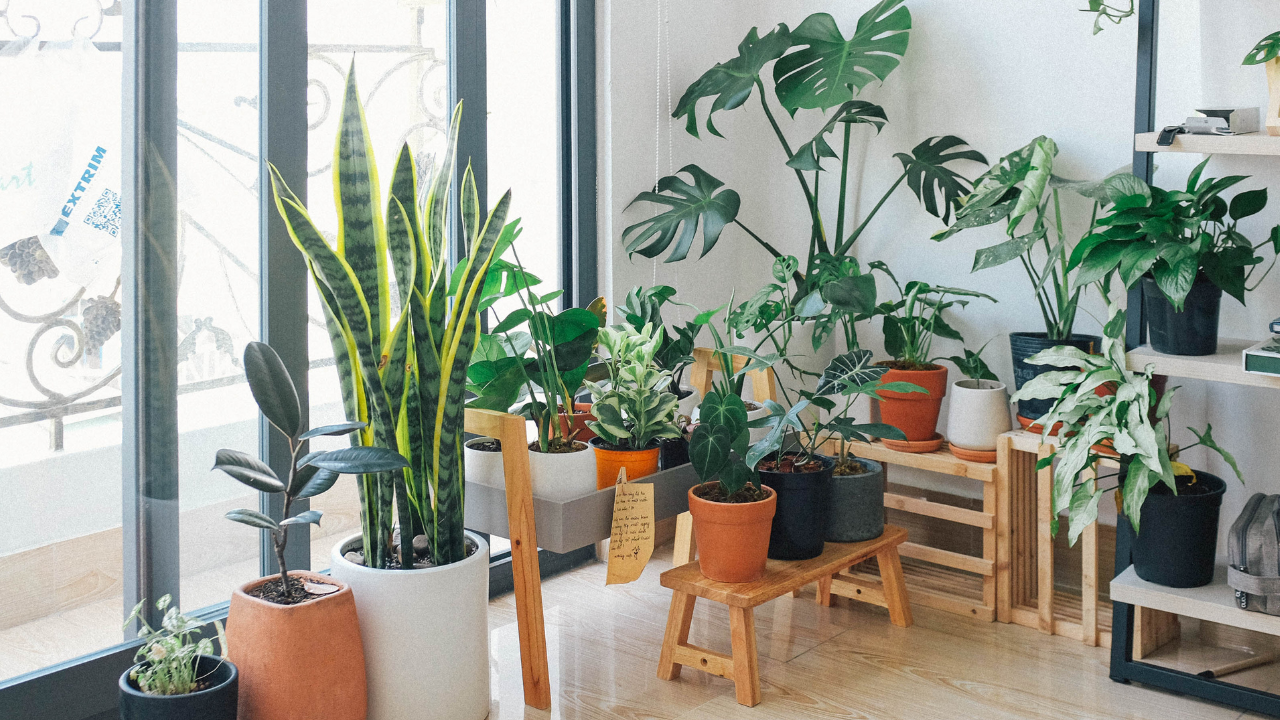Winter can be a challenging time for plants, as they face reduced sunlight, lower temperatures, and changes in humidity. To help your indoor and outdoor plants thrive during the colder months, it’s essential to adapt your care routine. Here are ten tips to ensure your plants remain healthy and vibrant throughout the winter season.
1. Adjust Watering Frequency
In winter, plants generally need less water than during the growing seasons. Overwatering can lead to root rot and other issues, so it’s important to monitor soil moisture carefully. Allow the top inch of soil to dry out before watering again, and always use well-draining pots to prevent water from accumulating.
It’s also a good idea to water your plants in the morning. This gives them ample time to absorb moisture before the cooler evening temperatures set in. Avoid using cold water; instead, use room-temperature water to avoid shocking the roots.
2. Provide Adequate Light
With shorter days and weaker sunlight, plants may struggle to get the light they need. If possible, place your plants near south or west-facing windows where they can receive the most natural light. If natural light is insufficient, consider supplementing with artificial grow lights (check prize on Amazon).
These can provide the necessary spectrum of light to keep your plants healthy. Position the lights close to the plants, but not too close to avoid overheating the foliage.
3. Maintain Humidity Levels
Indoor heating can cause the air in your home to become very dry, which is not ideal for many houseplants. To increase humidity, you can use a humidifier or place a tray of water near your plants. Grouping plants together can also create a microenvironment with higher humidity.
Another effective method is to mist your plants regularly. However, be cautious not to overdo it, as excessive moisture on the leaves can lead to fungal problems. Monitor the humidity levels and adjust your methods accordingly.
4. Keep Plants Away from Drafts
Cold drafts from windows and doors can be detrimental to plants, causing stress and even damage. Ensure that your plants are not placed directly in the path of cold air. If necessary, move them to a more sheltered location during particularly cold spells.
Similarly, avoid placing plants near heating vents or radiators, as the sudden temperature changes can harm them. Consistent, moderate temperatures are best for plant health during the winter months.
5. Reduce Fertilizer Usage
During winter, most plants enter a period of dormancy or slow growth, and they do not require as many nutrients as in the growing season. Cut back on fertilizing your plants, as excess nutrients can accumulate in the soil and cause root burn.
If you do fertilize, use a diluted solution and apply it sparingly. Resume regular fertilizing schedules when you notice new growth in the spring.
6. Clean the Leaves
Dust can accumulate on plant leaves, reducing their ability to photosynthesize effectively. Regularly cleaning the leaves with a damp cloth can help ensure they get the maximum amount of light. Be gentle to avoid damaging the delicate foliage.
For plants with hairy leaves, like African violets, use a soft brush instead of a cloth. This will prevent water from getting trapped in the hairs, which can lead to rot.
7. Prune and Trim
Winter is a good time to prune and trim your plants. Removing dead or yellowing leaves helps prevent disease and encourages healthy growth. Use clean, sharp scissors or pruning shears to make clean cuts.
For woody plants, consider light pruning to shape them and remove any damaged or crossing branches. Pruning not only improves the plant’s appearance but also promotes better air circulation and light penetration.
8. Repot if Necessary
While winter is generally not the best time to repot plants, it can be done if necessary. If your plant is severely root-bound or the soil has degraded, repotting can help provide a healthier environment. Choose a pot that is slightly larger than the current one and use fresh potting mix.
Handle the roots gently, and try to disturb them as little as possible. Water the plant thoroughly after repotting and monitor it closely for signs of stress.
9. Monitor for Pests
Indoor plants can still attract pests during the winter. Regularly inspect your plants for signs of insects like spider mites, aphids, and scale. Early detection is key to preventing infestations from spreading.
If you find pests, treat them with insecticidal soap or neem oil. Isolate the affected plant to prevent the pests from spreading to other plants in your home.
10. Be Patient
Lastly, remember that many plants naturally slow down their growth or go dormant during the winter. It’s important to be patient and not expect the same level of growth and activity as during the warmer months. Focus on maintaining the health of your plants rather than pushing them to grow.
Understanding and respecting your plants’ natural cycles will help you provide better care. With the right adjustments, your plants can survive and even thrive throughout the winter, ready to burst into life when spring arrives.
By following these tips, you can ensure your plants stay healthy and beautiful, even when the weather outside is less than ideal. Happy winter gardening!

